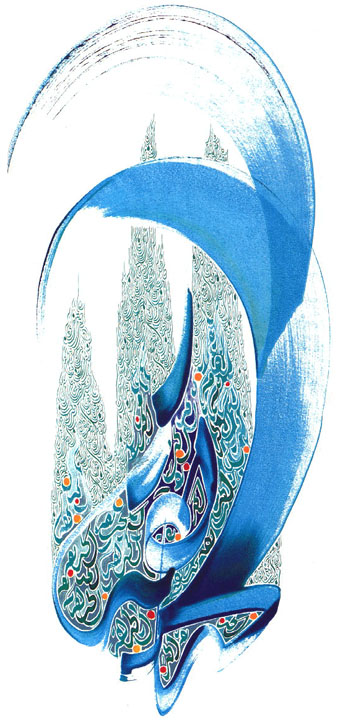
Ghubar calligraphy by Hassan Massoudy.
Ghubar (or “dust” in Arabic) is the name of a special kind of calligraphic script. As its name implies, ghubar can be as delicate as particles of dust on a piece of paper. Words written in this script can be as fine as a single hair.
Originally designed for messages being sent by carrier pigeon, ghubar script compresses information into the smallest possible space. The technique involves writing minuscule inscriptions that usually measure about 1.3 millimeters in height, and rarely exceed 3 millimeters. Apart from its postal function, ghubar was used by calligraphers in three ways: for the production of scrolls; for esoteric, talismanic and magical writings; and for copies of the Qur’an.
More here.
Previously on { feuilleton }
• Calligraphy by Mouneer Al-Shaárani
• The Journal of Ottoman Calligraphy
• Word into Art: Artists of the Modern Middle East

I don’t particularly like this, but Arabic calligraphy is gorgeous: even coins in countries like Saudi Arabia are miniature works of art, despite having no “images” on them. I have a theory the script itself is psychogeographically influenced by the shapes left in sand by snakes, the wind, and so on. It can look scimitar-like too, tho’.
Btw, Omniglot is good for both natural and invented scripts, if anyone doesn’t know it:
http://www.omniglot.com/
I love Arabic calligraphy, here, at Spain, we have well-known samples of its beauty,. Decorating the Alhambra of Granada and the Mosque of Córdova, and in general all the rest of the Andalusí time.
Masha-Allah!
This is beauty! Cool, cool, cool!!!
Selam from Bosnia an Hercegovina for Hassan Massoudy…..